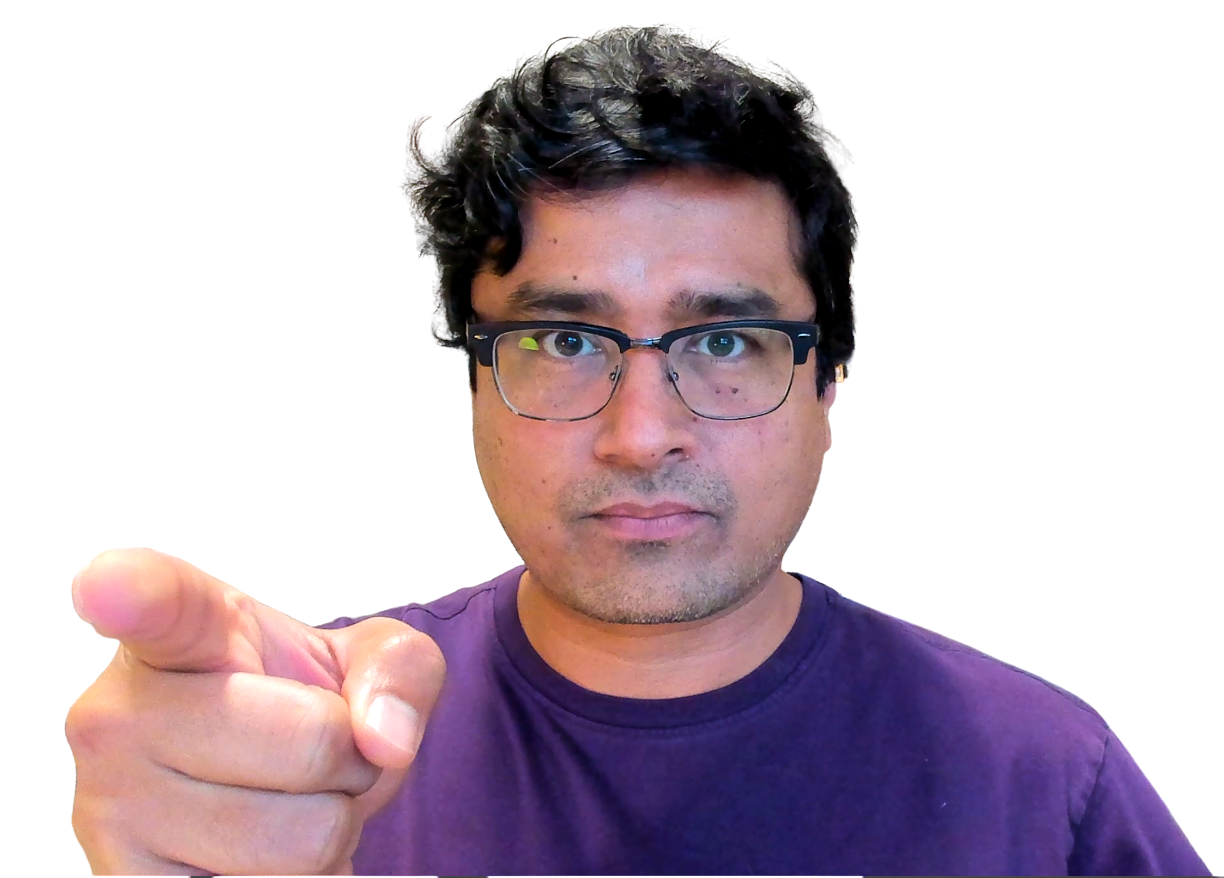Blog
Try This Unique Product Page Conversion Optimization Trick: Picture Story
A Picture Story is a way for the marketer to maximize the conversion impact of a picture.
50% of our brain’s cerebral cortex (the tissue that covers the brain) is devoted to image processing. This is probably where the saying “a picture is worth a thousand words” comes from. You probably weren’t expecting a human anatomy lesson when you opened this article, but I’ll tell you how this relates to product page conversion optimization in a moment.
First, I want you to think about your most important product page. Are you running a heatmap on that page? If so, you’ll probably see an image that looks something like this:
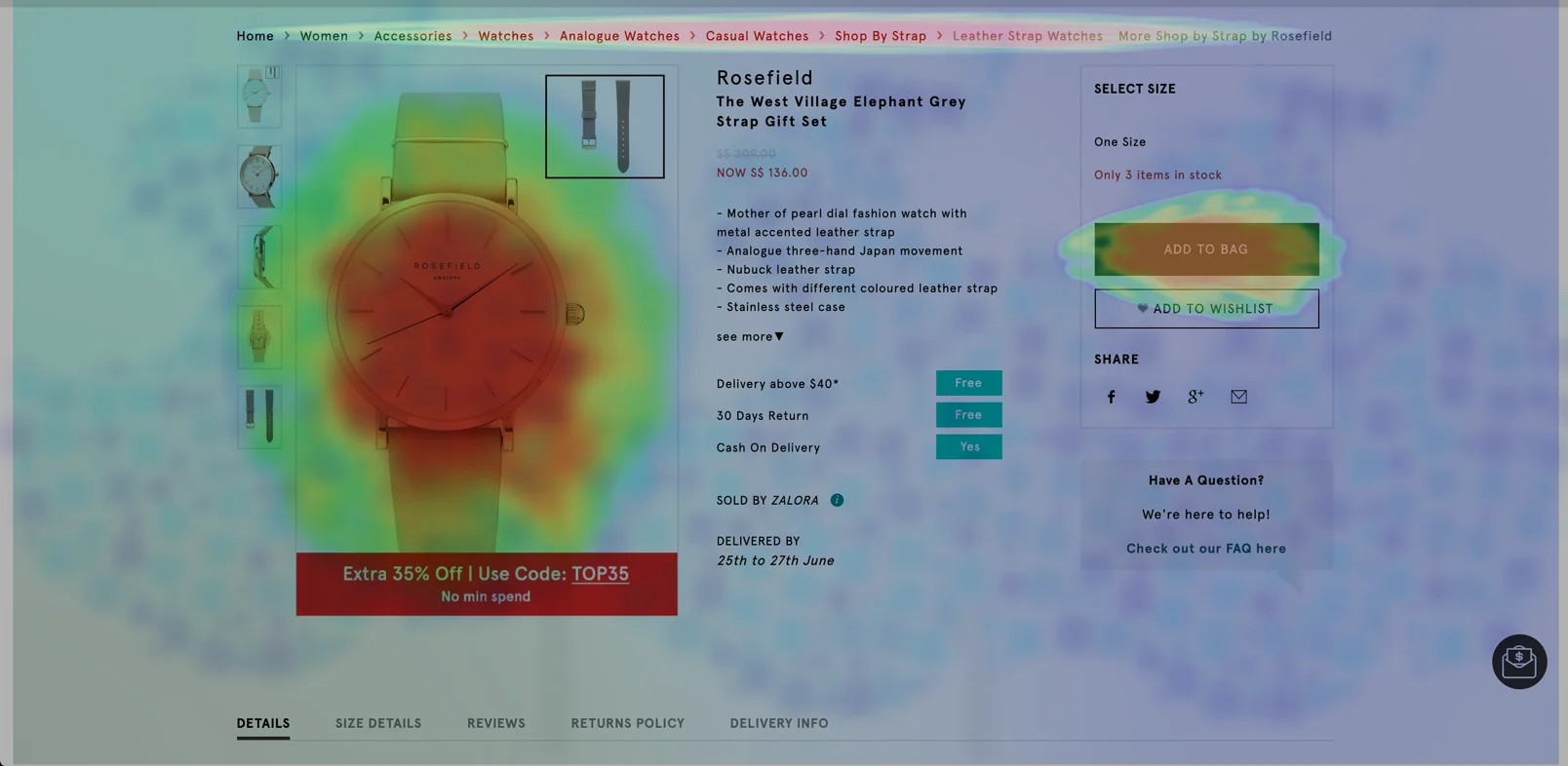
The red-hot areas are regions of user focus. The add-to-cart area receives a fair amount of attention, which is expected. What may be surprising is the massive amount of attention being placed on the product image.
Pictures are so powerful they pull attention away from everything else, including the product description.
This is a problem. A BIG problem. Why? Because the product description is the most important section for the marketer. It’s where the sales pitch is presented. It doesn’t matter how beautiful your site is—if the necessary information isn’t there, your shoppers will. Not. Buy.
Picture Story to the Rescue
Since so much attention is being placed on product images (and other images throughout the product page), the marketer has a big opportunity.
Put your most important Selling Angles (learn about selling angles) on your images. That way your images are doing two jobs:
1: They are providing visitors with a visual representation of your product.
2: They are increasing the visibility of your most important selling angles, the ones that your visitors might miss in the product description since they’re so busy gawking over your beautiful pictures!
I call this a Picture Story—you’re using your pictures to highlight important parts of your sales pitch.
A Picture Story is like a magazine ad:
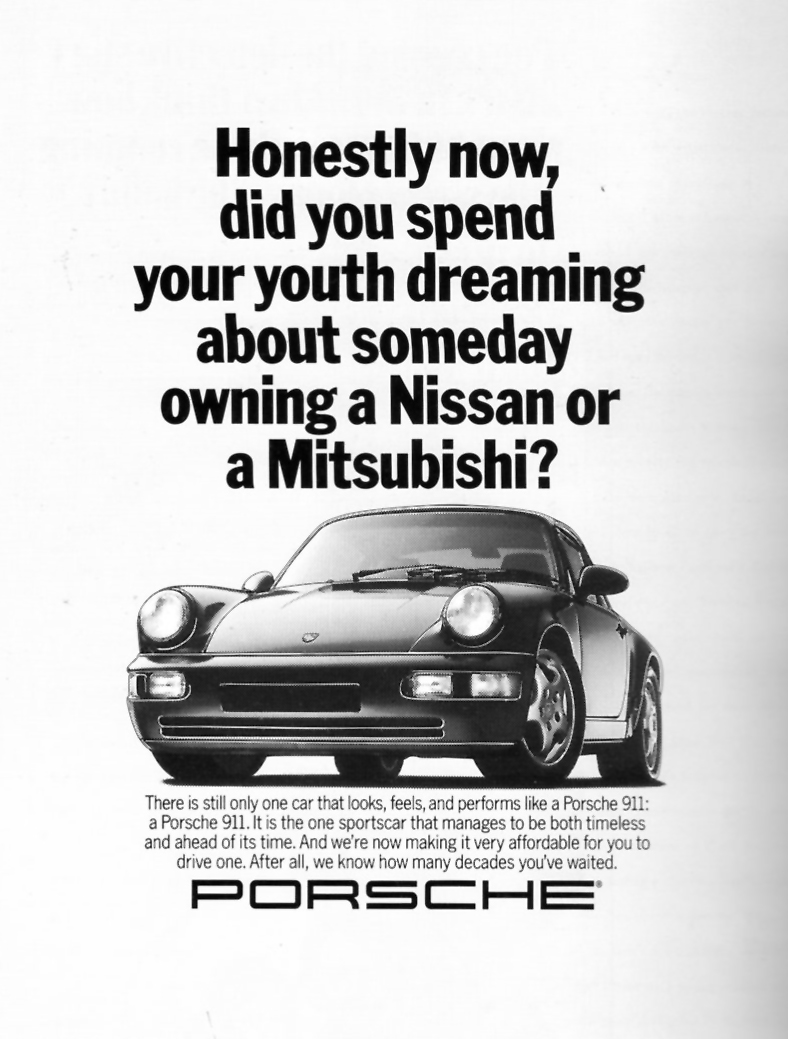
Picture Story Example 1
The image is so compelling I noticed that at 0.02 seconds of landing on the page:
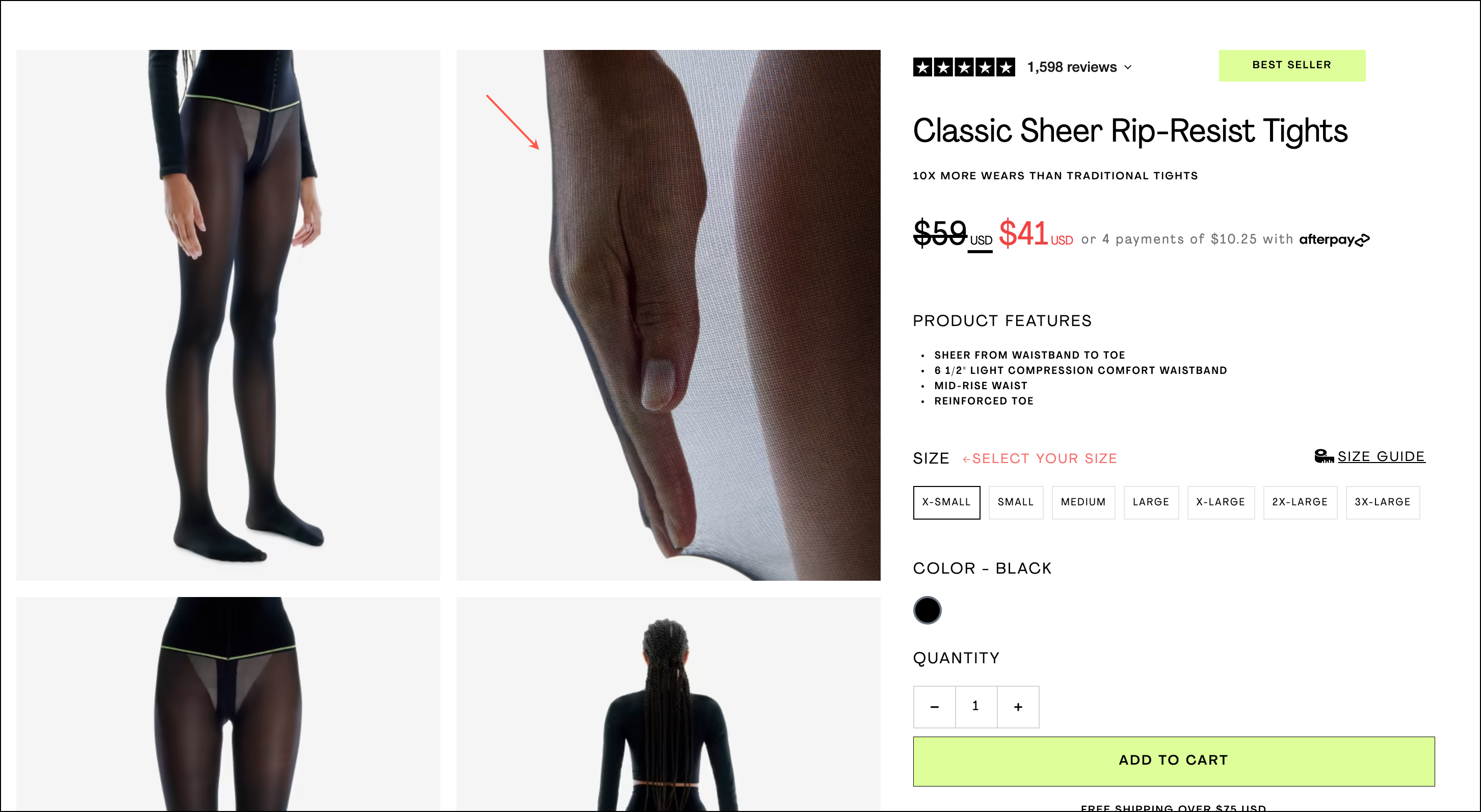
But because the image is so dramatic and takes so much visual room— as it should— I missed the 10x detail. Return to the image above and see if you can spot the 10x more wears than traditional tights line.
Did you spot the 10x line in image above?
Yes
— or —
No
This could have been easily fixed with a Picture Story. I would just convert my star image into this:
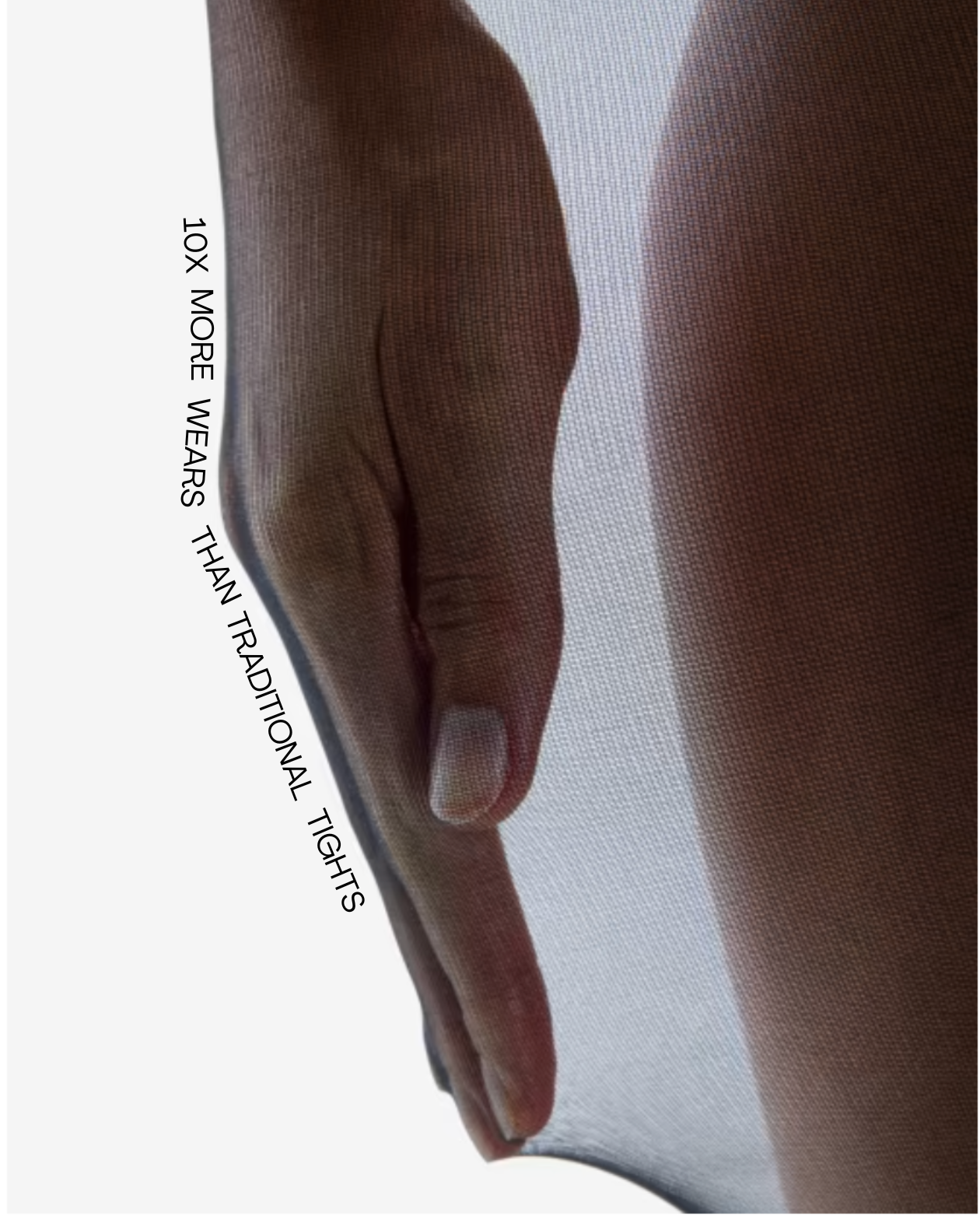
This way the user can still be sucked into the visual while also absorbing our sales pitch.
Note: You’ll notice the text isn’t interfering with the image. We don’t want to compete with the image we want to complement it.
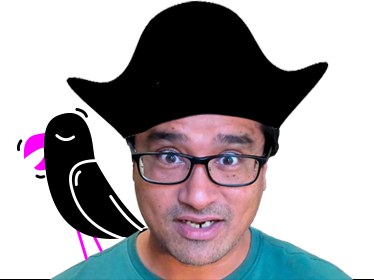
Since you’re liking this Picture Story article you’re gonna love the conversion ideas I share in my weekly newsletter.
Signup below. If it isn’t as good as I’m making it sound unsubscribe with one click.
Picture Story Example 2
Halo is a GPS dog collar. This is their mobile product page:

People on this page will linger on the image the longest because that’s the closest proxy for going to a physical retail store and touching a product. Since that element is getting a lot of attention why not convert the image into a picture story and use it to sell the product?
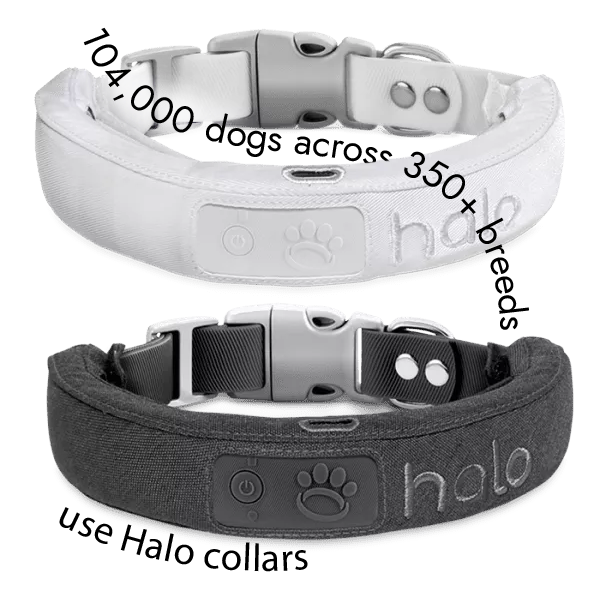
Notice how the added text is actually pulling the reader to spend even more time taking in the product image!
Do these 2 examples make sense? /
🙌
Uh oh! Let's get in touch so I can explain this better.
We'll talk soon!
Next Steps
Now that you understand the power of a Picture Story it’s time to return to mastering other aspects of micro-improvements.



